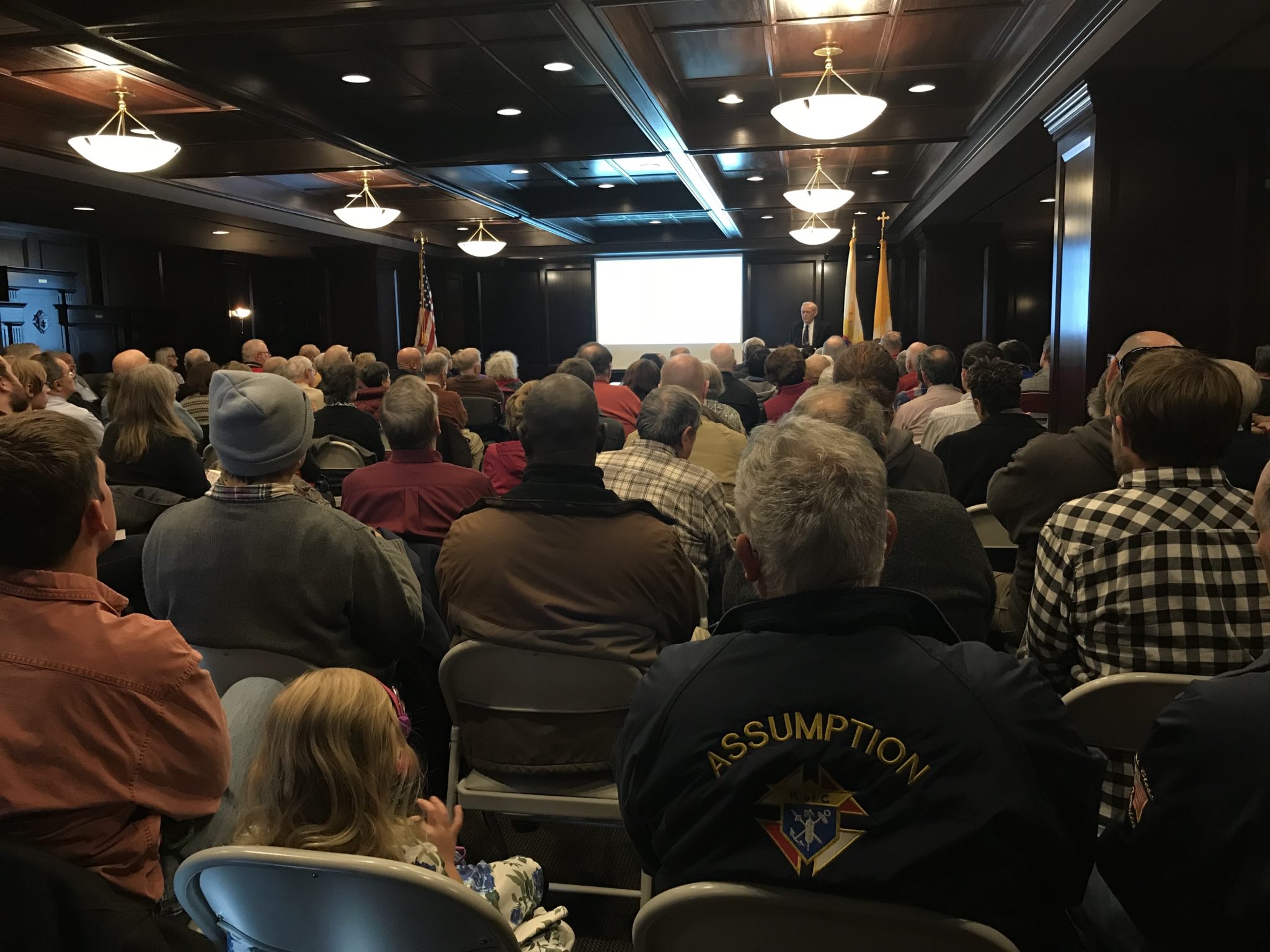
The Knights of Columbus Museum hosted Yale history professor Paul Kennedy on Saturday for a lecture on history’s greatest wars and the memorials erected to commemorate them.
The lecture was given on Nov. 11, Veterans Day and the anniversary of the Armistice of Compiegne, the end of the fighting on the Western Front during World War I. Kennedy’s talk was part of a lecture series designed to accompany the World War I exhibit currently on display at the Knights of Columbus Museum on State Street.
“This is supposed to be a deep reflection on the First World War and where we are as a nation a century after,” he said.
Kennedy drew much of his subject material from his book “The Rise and Fall of the Great Powers,” which celebrates its 30th anniversary this year. Kennedy also discussed war tributes, from looming marble sculptures to coins, poetry and songs.
Asked why he had chosen to speak about war memorials at the lecture, which was entitled “War, Peace, and Commemoration,” Kennedy replied, “It’s a way for people to most clearly identify with wars. It’s a wonderful, long tradition.”
Over the course of the hourlong lecture, Kennedy ran through the most notable battles in the Western tradition, such as the Battle of Lepanto in 1571 and the 30 Years’ War, as well as society’s varying opinions on death and carnage, ranging from the glorification of war to the verdict that it is “too ghastly and too close.” He emphasized a visible evolution from the older European memorials of generals to more modern memorial sites that commemorate the sacrifices made by common people.
This progression is evident in the differences between Nelson’s Column in Trafalgar Square in London, which elevates one man high above the ground, and Arlington Cemetery in Virginia, where ordinary soldiers are buried. Differences also exist in American monuments, from the controversial Robert E. Lee Monument in Richmond, Virginia, to Maya Lin’s Vietnam Veterans Memorial in Washington, D.C. Kennedy said the latter — which features the names of the fallen, ordered alphabetically — particularly emphasizes the equality of all in war.
Kennedy closed the lecture with a question to the audience.
“What are we going to do about America’s longest war?” he asked. “How will we memorialize the Afghan and Iraqi wars in the future?”
The choice to hone in on war tributes was surprising to Marc Wortman, a West Haven resident who said he has attended many of Kennedy’s lectures.
“I thought it was going to be a straight history lecture,” Wortman said.
For Chris Janis DIV ’96, who had not attended other lectures in the series, Kennedy’s presence as a prominent historian was the main draw.
“Seeing the World War I exhibit was so moving,” she added. “It’s one period of time when all of New Haven was together. Roman Catholics, Protestants, Jews, all together.”
Several members of the Knights of Columbus, a Catholic fraternal service organization, were present in the packed audience, wearing blue bomber jackets with the organization’s insignia. One of them, Albert Medura, made the trek to New Haven from Long Island to learn about the group’s role in World War I.
The exhibit “World War I: Beyond the Front Lines” will continue at the Knights of Columbus Museum through Dec. 30, 2018.
Brianna Wu | brianna.wu@yale.edu







